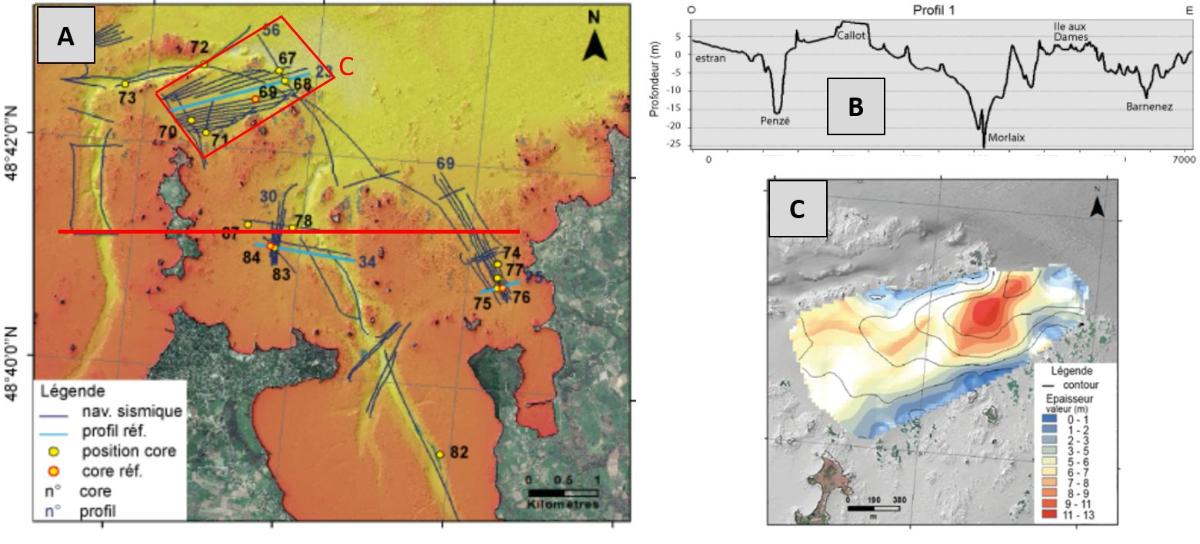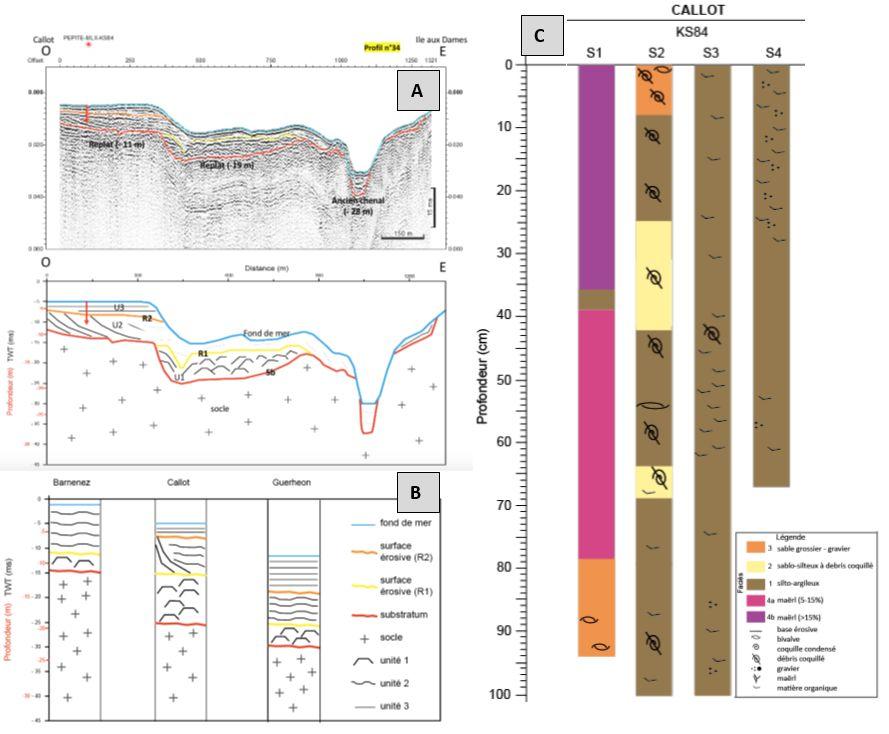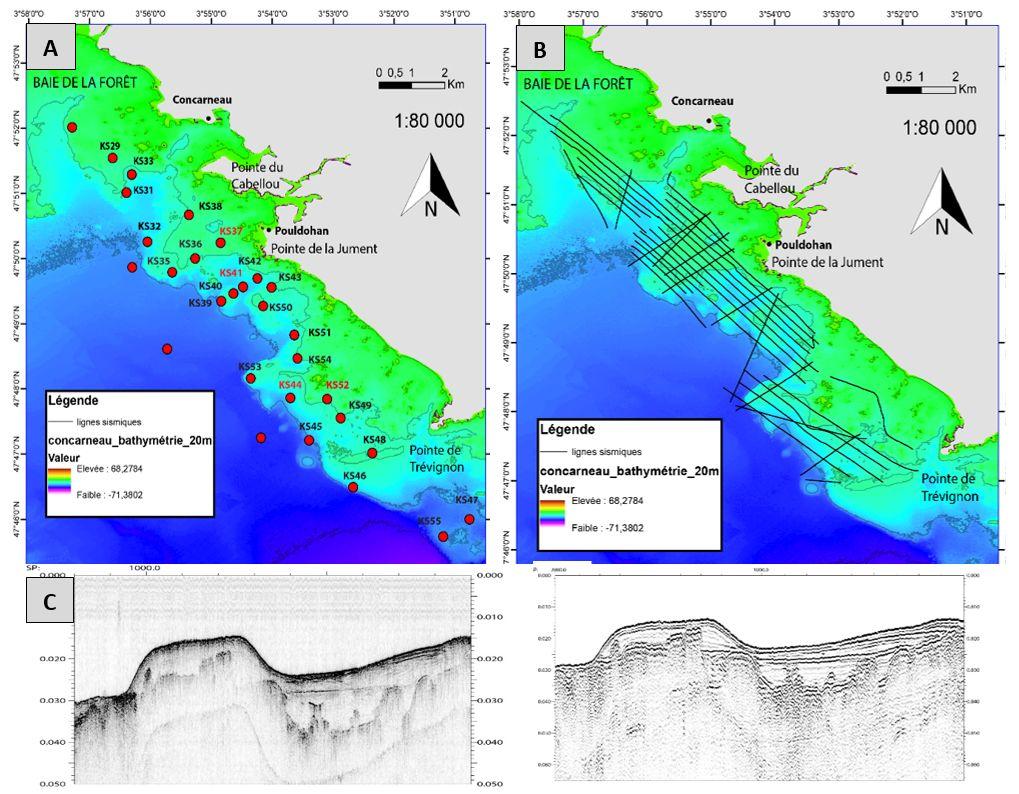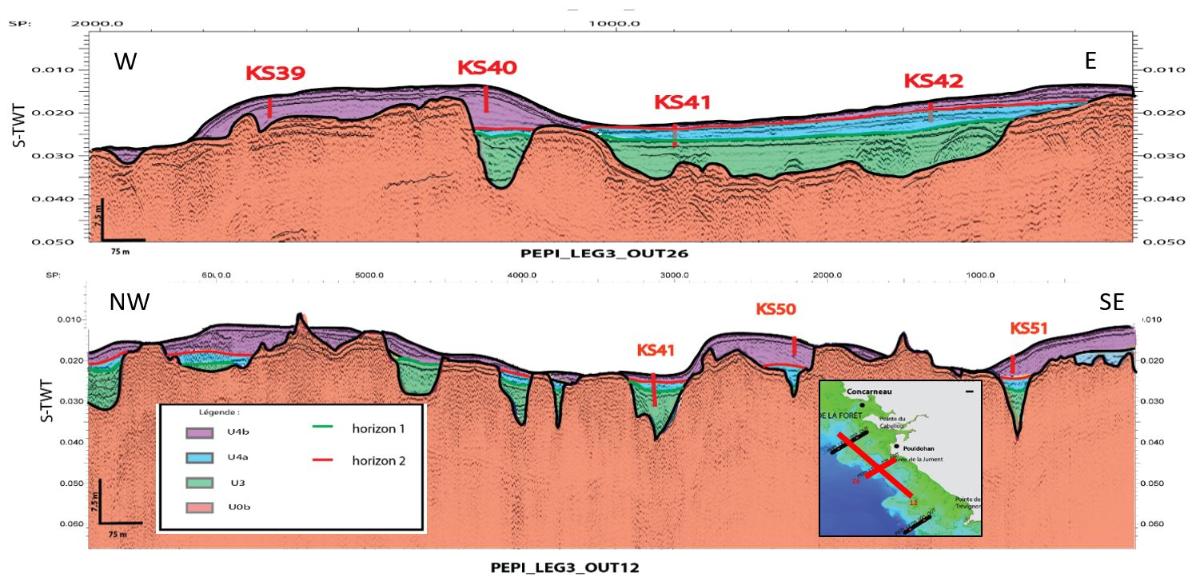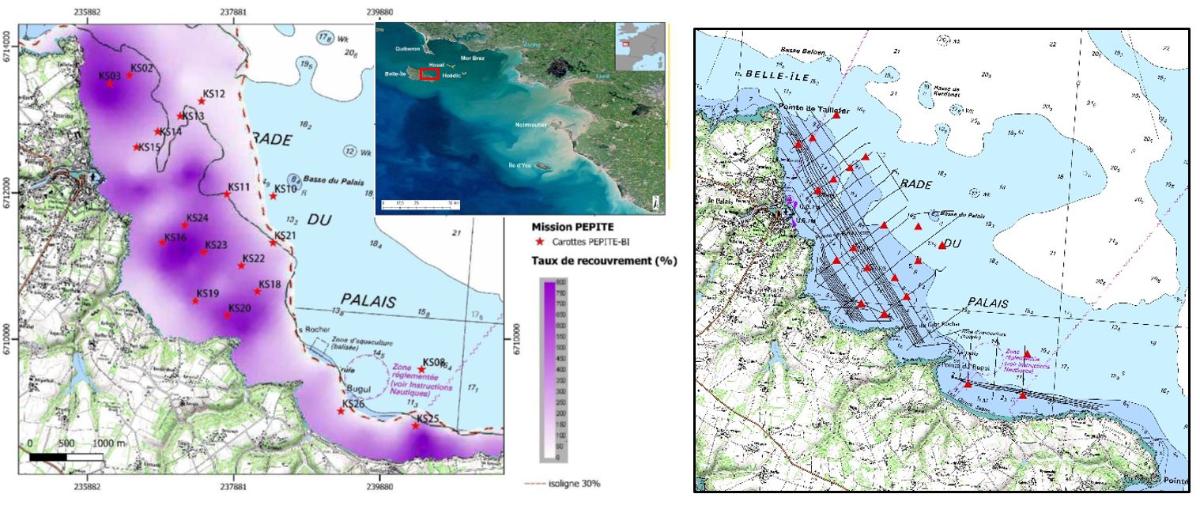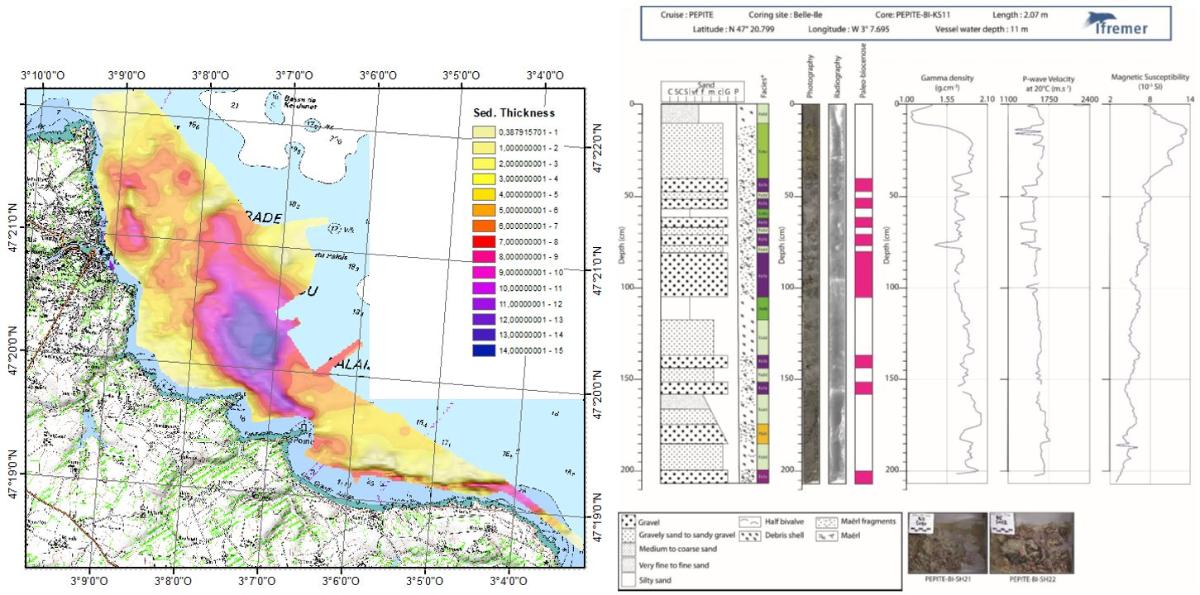|
PEPITE-BI-IS02 |
- |
Carottier d'interface MONOTUBE IFREMER-GM |
20190518 08:38:0018/05/2019 08:38:00 |
47° 20.640' N 3° 6.878' W |
- |
|
PEPITE-BI-IS03 |
- |
Carottier d'interface MONOTUBE IFREMER-GM |
20190518 09:11:0018/05/2019 09:11:00 |
47° 20.803' N 3° 7.231' W |
- |
|
PEPITE-BI-IS04 |
- |
Carottier d'interface MONOTUBE IFREMER-GM |
20190518 09:34:0018/05/2019 09:34:00 |
47° 21.463' N 3° 8.064' W |
- |
|
PEPITE-BI-IS10 |
- |
Carottier d'interface MONOTUBE IFREMER-GM |
20190518 12:34:0018/05/2019 12:34:00 |
47° 19.613' N 3° 5.503' W |
- |
|
PEPITE-CC-IS11 |
- |
Carottier d'interface MONOTUBE IFREMER-GM |
20190523 11:51:0023/05/2019 11:51:00 |
47° 45.728' N 3° 51.180' W |
- |
|
PEPITE-CC-IS12 |
- |
Carottier d'interface MONOTUBE IFREMER-GM |
20190523 12:20:0023/05/2019 12:20:00 |
47° 45.988' N 3° 50.764' W |
- |
|
PEPITE-CC-IS13 |
- |
Carottier d'interface MONOTUBE IFREMER-GM |
20190523 13:00:0023/05/2019 13:00:00 |
47° 46.487' N 3° 52.669' W |
- |
|
PEPITE-CC-IS14 |
- |
Carottier d'interface MONOTUBE IFREMER-GM |
20190523 13:48:0023/05/2019 13:48:00 |
47° 47.211' N 3° 53.400' W |
- |
|
PEPITE-CC-IS15 |
- |
Carottier d'interface MONOTUBE IFREMER-GM |
20190523 14:16:0023/05/2019 14:16:00 |
47° 47.560' N 3° 52.850' W |
- |
|
PEPITE-CC-IS16 |
- |
Carottier d'interface MONOTUBE IFREMER-GM |
20190523 14:44:0023/05/2019 14:44:00 |
47° 47.838' N 3° 53.091' W |
- |
|
PEPITE-CC-IS17 |
- |
Carottier d'interface MONOTUBE IFREMER-GM |
20190524 10:27:0024/05/2019 10:27:00 |
47° 50.664' N 3° 55.354' W |
- |
|
PEPITE-CC-IS18 |
- |
Carottier d'interface MONOTUBE IFREMER-GM |
20190524 11:51:0024/05/2019 11:51:00 |
47° 49.551' N 3° 54.450' W |
- |
|
PEPITE-CC-IS19 |
- |
Carottier d'interface MONOTUBE IFREMER-GM |
20190524 12:05:0024/05/2019 12:05:00 |
47° 49.701' N 3° 54.238' W |
- |
|
PEPITE-CC-IS20 |
- |
Carottier d'interface MONOTUBE IFREMER-GM |
20190524 12:23:0024/05/2019 12:23:00 |
47° 49.446' N 3° 54.612' W |
- |
|
PEPITE-CC-IS21 |
- |
Carottier d'interface MONOTUBE IFREMER-GM |
20190524 12:38:0024/05/2019 12:38:00 |
47° 49.313' N 3° 54.849' W |
- |
|
PEPITE-CC-IS22 |
- |
Carottier d'interface MONOTUBE IFREMER-GM |
20190524 13:12:0024/05/2019 13:12:00 |
47° 49.254' N 3° 54.172' W |
- |
|
PEPITE-CC-IS23 |
- |
Carottier d'interface MONOTUBE IFREMER-GM |
20190524 13:28:0024/05/2019 13:28:00 |
47° 48.807' N 3° 53.633' W |
- |
|
PEPITE-CC-IS24 |
- |
Carottier d'interface MONOTUBE IFREMER-GM |
20190525 08:42:0025/05/2019 08:42:00 |
47° 48.598' N 3° 55.697' W |
- |
|
PEPITE-CC-IS25 |
- |
Carottier d'interface MONOTUBE IFREMER-GM |
20190525 09:01:0025/05/2019 09:01:00 |
47° 49.835' N 3° 56.294' W |
- |
|
PEPITE-CC-IS26 |
- |
Carottier d'interface MONOTUBE IFREMER-GM |
20190525 09:20:0025/05/2019 09:20:00 |
47° 51.279' N 3° 56.304' W |
- |
|
PEPITE-CC-IS27 |
- |
Carottier d'interface MONOTUBE IFREMER-GM |
20190525 09:36:0025/05/2019 09:36:00 |
47° 51.522' N 3° 56.614' W |
- |
|
PEPITE-MLX-IS28 |
- |
Carottier d'interface MONOTUBE IFREMER-GM |
20190530 07:01:0030/05/2019 07:01:00 |
48° 41.135' N 3° 51.648' W |
- |
|
PEPITE-MLX-IS29 |
- |
Carottier d'interface MONOTUBE IFREMER-GM |
20190530 07:43:0030/05/2019 07:43:00 |
48° 40.919' N 3° 51.618' W |
- |
|
PEPITE-MLX-IS30 |
- |
Carottier d'interface MONOTUBE IFREMER-GM |
20190530 08:04:0030/05/2019 08:04:00 |
48° 41.876' N 3° 53.696' W |
- |
|
PEPITE-MLX-IS31 |
- |
Carottier d'interface MONOTUBE IFREMER-GM |
20190530 08:28:0030/05/2019 08:28:00 |
48° 41.346' N 3° 54.055' W |
- |
|
PEPITE-MLX-IS32 |
- |
Carottier d'interface MONOTUBE IFREMER-GM |
20190530 08:50:0030/05/2019 08:50:00 |
48° 41.149' N 3° 53.724' W |
- |
|
PEPITE-MLX-IS33 |
- |
Carottier d'interface MONOTUBE IFREMER-GM |
20190530 09:24:0030/05/2019 09:24:00 |
48° 42.175' N 3° 56.559' W |
- |
|
PEPITE-BI-KS01 |
- |
Carottier KULLENBERG |
20190516 09:58:0016/05/2019 09:58:00 |
47° 21.859' N 3° 8.524' W |
- |
|
PEPITE-BI-KS02 |
- |
Carottier KULLENBERG |
20190516 10:13:0016/05/2019 10:13:00 |
47° 21.614' N 3° 8.850' W |
- |
|
PEPITE-BI-KS03 |
- |
Carottier KULLENBERG |
20190516 12:57:0016/05/2019 12:57:00 |
47° 21.535' N 3° 9.048' W |
- |
|
PEPITE-BI-KS04 |
- |
Carottier KULLENBERG |
20190516 13:43:0016/05/2019 13:43:00 |
47° 21.090' N 3° 8.705' W |
- |
|
PEPITE-BI-KS05 |
- |
Carottier KULLENBERG |
20190516 14:26:0016/05/2019 14:26:00 |
47° 20.414' N 3° 8.360' W |
- |
|
PEPITE-BI-KS07 |
- |
Carottier KULLENBERG |
20190516 15:35:0016/05/2019 15:35:00 |
47° 19.903' N 3° 7.600' W |
- |
|
PEPITE-BI-KS08 |
- |
Carottier KULLENBERG |
20190517 06:01:0017/05/2019 06:01:00 |
47° 19.613' N 3° 5.436' W |
- |
|
PEPITE-BI-KS10 |
- |
Carottier KULLENBERG |
20190517 07:47:0017/05/2019 07:47:00 |
47° 20.807' N 3° 7.203' W |
- |
|
PEPITE-BI-KS11 |
- |
Carottier KULLENBERG |
20190517 08:27:0017/05/2019 08:27:00 |
47° 20.797' N 3° 7.706' W |
- |
|
PEPITE-BI-KS12 |
- |
Carottier KULLENBERG |
20190517 09:13:0017/05/2019 09:13:00 |
47° 21.463' N 3° 8.055' W |
- |
|
PEPITE-BI-KS13 |
- |
Carottier KULLENBERG |
20190517 11:15:0017/05/2019 11:15:00 |
47° 21.344' N 3° 8.255' W |
- |
|
PEPITE-BI-KS14 |
- |
Carottier KULLENBERG |
20190517 11:58:0017/05/2019 11:58:00 |
47° 21.218' N 3° 8.496' W |
- |
|
PEPITE-BI-KS15 |
- |
Carottier KULLENBERG |
20190517 12:40:0017/05/2019 12:40:00 |
47° 21.097' N 3° 8.719' W |
- |
|
PEPITE-BI-KS16 |
- |
Carottier KULLENBERG |
20190517 13:16:0017/05/2019 13:16:00 |
47° 20.407' N 3° 8.355' W |
- |
|
PEPITE-BI-KS18 |
- |
Carottier KULLENBERG |
20190517 14:33:0017/05/2019 14:33:00 |
47° 20.089' N 3° 7.276' W |
- |
|
PEPITE-BI-KS19 |
- |
Carottier KULLENBERG |
20190517 15:02:0017/05/2019 15:02:00 |
47° 19.991' N 3° 7.940' W |
- |
|
PEPITE-BI-KS20 |
- |
Carottier KULLENBERG |
20190517 15:33:0017/05/2019 15:33:00 |
47° 19.908' N 3° 7.587' W |
- |
|
PEPITE-BI-KS21 |
- |
Carottier KULLENBERG |
20190518 05:47:0018/05/2019 05:47:00 |
47° 20.463' N 3° 7.149' W |
- |
|
PEPITE-BI-KS22 |
- |
Carottier KULLENBERG |
20190518 06:23:0018/05/2019 06:23:00 |
47° 20.278' N 3° 7.489' W |
- |
|
PEPITE-BI-KS23 |
- |
Carottier KULLENBERG |
20190518 06:54:0018/05/2019 06:54:00 |
47° 20.362' N 3° 7.894' W |
- |
|
PEPITE-BI-KS24 |
- |
Carottier KULLENBERG |
20190518 05:38:0018/05/2019 05:38:00 |
47° 20.551' N 3° 8.131' W |
- |
|
PEPITE-BI-KS25 |
- |
Carottier KULLENBERG |
20190518 13:13:5918/05/2019 13:13:59 |
47° 19.206' N 3° 5.440' W |
- |
|
PEPITE-BI-KS26 |
- |
Carottier KULLENBERG |
20190518 13:51:0018/05/2019 13:51:00 |
47° 19.267' N 3° 6.278' W |
- |
|
PEPITE-BI-KS27 |
- |
Carottier KULLENBERG |
20190518 14:24:0018/05/2019 14:24:00 |
47° 20.640' N 3° 6.820' W |
- |
|
PEPITE-CC-KS56 |
- |
Carottier Gravitaire |
20190524 14:10:0024/05/2019 14:10:00 |
47° 48.438' N 3° 53.586' W |
- |
|
PEPITE-CC-KS57 |
- |
Carottier Gravitaire |
20190524 15:16:0024/05/2019 15:16:00 |
47° 48.144' N 3° 54.322' W |
- |
|
PEPITE-CC-KS58 |
- |
Carottier Gravitaire |
20190524 15:29:0024/05/2019 15:29:00 |
47° 47.827' N 3° 53.733' W |
- |
|
PEPITE-CC-KS60 |
- |
Carottier Gravitaire |
20190524 16:44:0024/05/2019 16:44:00 |
47° 50.250' N 3° 56.049' W |
- |
|
PEPITE-CC-KS64 |
- |
Carottier Gravitaire |
20190525 06:30:0025/05/2019 06:30:00 |
47° 51.002' N 3° 56.375' W |
- |
|
PEPITE-CC-KS28 |
- |
Carottier KULLENBERG |
20190520 06:36:5920/05/2019 06:36:59 |
47° 52.011' N 3° 57.281' W |
- |
|
PEPITE-CC-KS29 |
- |
Carottier KULLENBERG |
20190520 07:21:0020/05/2019 07:21:00 |
47° 52.539' N 3° 56.619' W |
- |
|
PEPITE-CC-KS31 |
- |
Carottier KULLENBERG |
20190520 08:45:0020/05/2019 08:45:00 |
47° 51.009' N 3° 56.389' W |
- |
|
PEPITE-CC-KS32 |
- |
Carottier KULLENBERG |
20190520 09:29:0020/05/2019 09:29:00 |
47° 50.255' N 3° 56.036' W |
- |
|
PEPITE-CC-KS33 |
- |
Carottier KULLENBERG |
20190520 11:11:0020/05/2019 11:11:00 |
47° 51.287' N 3° 56.302' W |
- |
|
PEPITE-CC-KS34 |
- |
Carottier KULLENBERG |
20190520 12:00:0020/05/2019 12:00:00 |
47° 49.863' N 3° 56.295' W |
- |
|
PEPITE-CC-KS35 |
- |
Carottier KULLENBERG |
20190520 12:41:5920/05/2019 12:41:59 |
47° 49.785' N 3° 55.638' W |
- |
|
PEPITE-CC-KS36 |
- |
Carottier KULLENBERG |
20190520 13:22:0020/05/2019 13:22:00 |
47° 49.999' N 3° 55.263' W |
- |
|
PEPITE-CC-KS37 |
- |
Carottier KULLENBERG |
20190520 13:55:0020/05/2019 13:55:00 |
47° 50.238' N 3° 54.847' W |
- |
|
PEPITE-CC-KS38 |
- |
Carottier KULLENBERG |
20190520 14:30:0020/05/2019 14:30:00 |
47° 50.665' N 3° 55.363' W |
- |
|
PEPITE-CC-KS39 |
- |
Carottier KULLENBERG |
20190522 06:25:0022/05/2019 06:25:00 |
47° 49.343' N 3° 54.834' W |
- |
|
PEPITE-CC-KS40 |
- |
Carottier KULLENBERG |
20190522 07:09:0022/05/2019 07:09:00 |
47° 49.463' N 3° 54.635' W |
- |
|
PEPITE-CC-KS41 |
- |
Carottier KULLENBERG |
20190522 07:30:0022/05/2019 07:30:00 |
47° 49.562' N 3° 54.477' W |
- |
|
PEPITE-CC-KS42 |
- |
Carottier KULLENBERG |
20190522 08:20:0022/05/2019 08:20:00 |
47° 49.692' N 3° 54.238' W |
- |
|
PEPITE-CC-KS43 |
- |
Carottier KULLENBERG |
20190522 09:02:0022/05/2019 09:02:00 |
47° 49.558' N 3° 54.008' W |
- |
|
PEPITE-CC-KS44 |
- |
Carottier KULLENBERG |
20190522 11:03:0022/05/2019 11:03:00 |
47° 47.857' N 3° 53.699' W |
- |
|
PEPITE-CC-KS45 |
- |
Carottier KULLENBERG |
20190522 12:00:0022/05/2019 12:00:00 |
47° 47.208' N 3° 53.393' W |
- |
|
PEPITE-CC-KS46 |
- |
Carottier KULLENBERG |
20190522 12:22:5922/05/2019 12:22:59 |
47° 46.490' N 3° 52.670' W |
- |
|
PEPITE-CC-KS47 |
- |
Carottier KULLENBERG |
20190522 13:03:0022/05/2019 13:03:00 |
47° 45.936' N 3° 50.759' W |
- |
|
PEPITE-CC-KS48 |
- |
Carottier KULLENBERG |
20190522 13:52:0022/05/2019 13:52:00 |
47° 47.015' N 3° 52.353' W |
- |
|
PEPITE-CC-KS49 |
- |
Carottier KULLENBERG |
20190522 14:25:0022/05/2019 14:25:00 |
47° 47.551' N 3° 52.872' W |
- |
|
PEPITE-CC-KS50 |
- |
Carottier KULLENBERG |
20190523 06:30:0023/05/2019 06:30:00 |
47° 49.268' N 3° 54.144' W |
- |
|
PEPITE-CC-KS51 |
- |
Carottier KULLENBERG |
20190523 07:08:0023/05/2019 07:08:00 |
47° 48.825' N 3° 53.633' W |
- |
|
PEPITE-CC-KS52 |
- |
Carottier KULLENBERG |
20190523 07:46:0023/05/2019 07:46:00 |
47° 47.838' N 3° 53.096' W |
- |
|
PEPITE-CC-KS53 |
- |
Carottier KULLENBERG |
20190523 08:20:0023/05/2019 08:20:00 |
47° 48.156' N 3° 54.348' W |
- |
|
PEPITE-CC-KS54 |
- |
Carottier KULLENBERG |
20190523 09:02:0023/05/2019 09:02:00 |
47° 48.465' N 3° 53.581' W |
- |
|
PEPITE-CC-KS55 |
- |
Carottier KULLENBERG |
20190523 09:51:0023/05/2019 09:51:00 |
47° 45.733' N 3° 51.190' W |
- |
|
PEPITE-CC-KS65 |
- |
Carottier KULLENBERG |
20190525 07:36:0025/05/2019 07:36:00 |
47° 47.247' N 3° 54.180' W |
- |
|
PEPITE-CC-KS66 |
- |
Carottier KULLENBERG |
20190525 08:13:0025/05/2019 08:13:00 |
47° 48.610' N 3° 55.724' W |
- |
|
PEPITE-MLX-KS67 |
- |
Carottier KULLENBERG |
20190528 05:59:0028/05/2019 05:59:00 |
48° 42.720' N 3° 54.443' W |
- |
|
PEPITE-MLX-KS68 |
- |
Carottier KULLENBERG |
20190528 06:33:0028/05/2019 06:33:00 |
48° 42.631' N 3° 54.352' W |
- |
|
PEPITE-MLX-KS70 |
- |
Carottier KULLENBERG |
20190528 07:33:0028/05/2019 07:33:00 |
48° 42.220' N 3° 55.409' W |
- |
|
PEPITE-MLX-KS72 |
- |
Carottier KULLENBERG |
20190528 08:32:0028/05/2019 08:32:00 |
48° 42.732' N 3° 55.329' W |
- |
|
PEPITE-MLX-KS74 |
- |
Carottier KULLENBERG |
20190528 09:00:0028/05/2019 09:00:00 |
48° 41.130' N 3° 51.651' W |
- |
|
PEPITE-MLX-KS76 |
- |
Carottier KULLENBERG |
20190528 11:53:0028/05/2019 11:53:00 |
48° 40.926' N 3° 51.569' W |
- |
|
PEPITE-MLX-KS77 |
- |
Carottier KULLENBERG |
20190528 12:22:0028/05/2019 12:22:00 |
48° 41.001' N 3° 51.622' W |
- |
|
PEPITE-MLX-KS78 |
- |
Carottier KULLENBERG |
20190528 13:11:0028/05/2019 13:11:00 |
48° 41.322' N 3° 54.105' W |
- |
|
PEPITE-MLX-KS79 |
- |
Carottier KULLENBERG |
20190529 09:09:0029/05/2019 09:09:00 |
48° 41.129' N 3° 54.286' W |
- |
|
PEPITE-MLX-KS69 |
- |
Carottier KULLENBERG |
20190528 07:03:0028/05/2019 07:03:00 |
48° 42.458' N 3° 54.686' W |
- |
|
PEPITE-MLX-KS71 |
- |
Carottier KULLENBERG |
20190528 07:59:0028/05/2019 07:59:00 |
48° 42.123' N 3° 55.229' W |
- |
|
PEPITE-MLX-KS73 |
- |
Carottier KULLENBERG |
20190528 09:05:0028/05/2019 09:05:00 |
48° 42.503' N 3° 56.243' W |
- |
|
PEPITE-MLX-KS75 |
- |
Carottier KULLENBERG |
20190528 11:26:0028/05/2019 11:26:00 |
48° 40.916' N 3° 51.607' W |
- |
|
PEPITE-MLX-KS82 |
- |
Carottier KULLENBERG |
20190529 11:59:0029/05/2019 11:59:00 |
48° 39.387' N 3° 52.100' W |
- |
|
PEPITE-MLX-KS83 |
- |
Carottier KULLENBERG |
20190529 12:25:0029/05/2019 12:25:00 |
48° 41.130' N 3° 54.286' W |
- |
|
PEPITE-MLX-KS84 |
- |
Carottier KULLENBERG |
20190529 13:00:0029/05/2019 13:00:00 |
48° 41.147' N 3° 54.329' W |
- |
|
PEPITE-MLX-KS87 |
- |
Carottier KULLENBERG |
20190530 13:20:5930/05/2019 13:20:59 |
48° 41.330' N 3° 54.625' W |
- |
|
PEPITE-MLX-KS80 |
- |
Carottier KULLENBERG |
20190529 09:37:0029/05/2019 09:37:00 |
48° 41.147' N 3° 54.328' W |
- |


